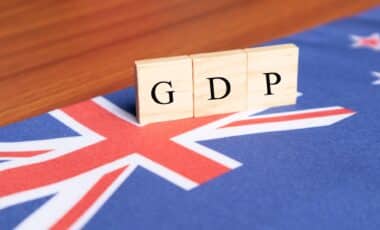The Reserve Bank of Australia (RBA) has cut interest rates for the first time since 2022, reducing the cash rate target from 4.35% to 4.1%.
The move follows a period of aggressive rate hikes aimed at curbing inflation, but RBA Governor Michele Bullock acknowledged the bank’s previous hesitation in raising rates and signalled a desire to avoid similar delays when cutting them.
Appearing before the House Economics Committee in Canberra, Bullock explained that the decision reflects a decline in inflation, slower wage growth, and weakened private demand.
However, she also emphasised that the lag effect of monetary policy played a key role in the timing of the cut. This approach, she suggested, ensures that rates are adjusted in anticipation of economic conditions rather than in reaction to them.
The RBA Seeks to Avoid Past Mistakes
Bullock admitted that the RBA had been slow to raise interest rates in response to rising inflation in 2021 and 2022, a move that drew criticism from economists and policymakers at the time.
According to Bullock, the central bank was aware of the risk of repeating the same error in the opposite direction—cutting rates too late and potentially stalling economic recovery.
“Arguably, we were late raising interest rates on the way up. We didn’t respond as quickly as we should have to rising inflation,” Bullock told the committee. Given the 12 to 24-month lag in monetary policy effects, the RBA Board is now acting before inflation reaches the 2-3% target band, aiming to provide stability as economic conditions evolve.
The RBA’s previous hesitancy was particularly evident during 2021 and early 2022, when comparable central banks—including the US Federal Reserve and the Bank of England—had already started increasing rates.
At that time, inflation in Australia had already climbed to 5% annually, yet the RBA delayed its first rate hike until May 2022. This decision, coinciding with the federal election campaign, sparked further scrutiny.
Rate Cut Follows ‘Insurance’ Hike in Late 2023
Despite some criticism that this week’s rate cut was premature, Bullock defended the decision by pointing to the RBA’s November 2023 rate increase, which raised the cash rate to 4.35%. According to Bullock, that increase served as “a bit of insurance,” giving the RBA room to manoeuvre should economic conditions permit an easing of rates.
“In November 2023, we raised interest rates again, by 25 basis points to 4.35%, and we copped quite a lot of criticism at the time,” Bullock said. “We’d taken out a bit of insurance. We’ve removed that now because we think it’s still a prudent move.”
Looking ahead, the RBA remains cautious, stressing that continued economic progress is necessary for further rate reductions. While inflation is expected to return to the target band this year, Bullock highlighted the importance of ensuring it stays there sustainably before making additional adjustments.









